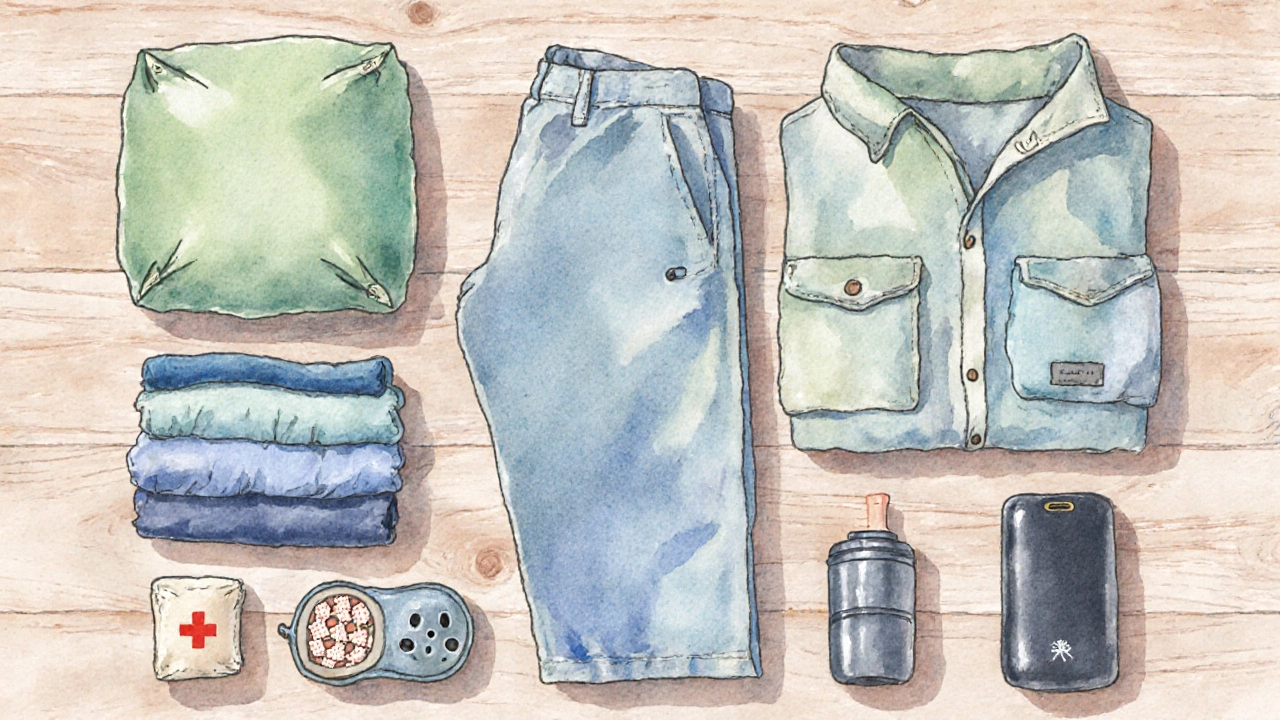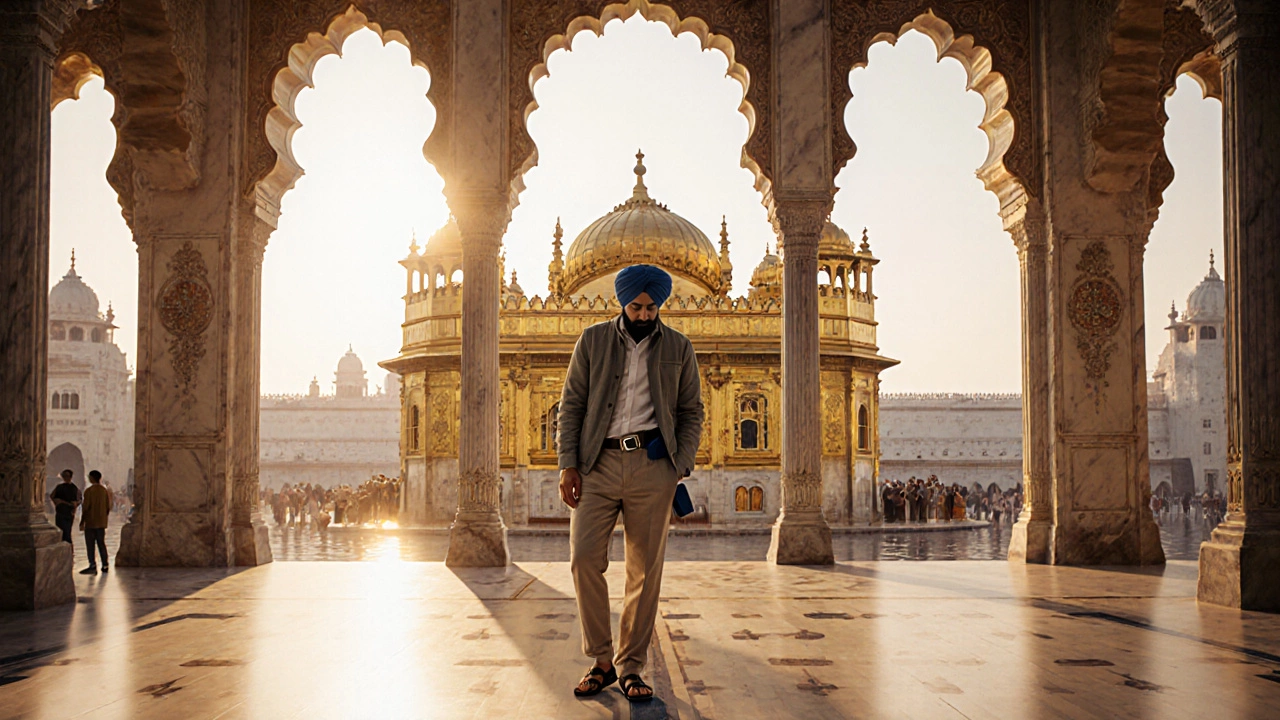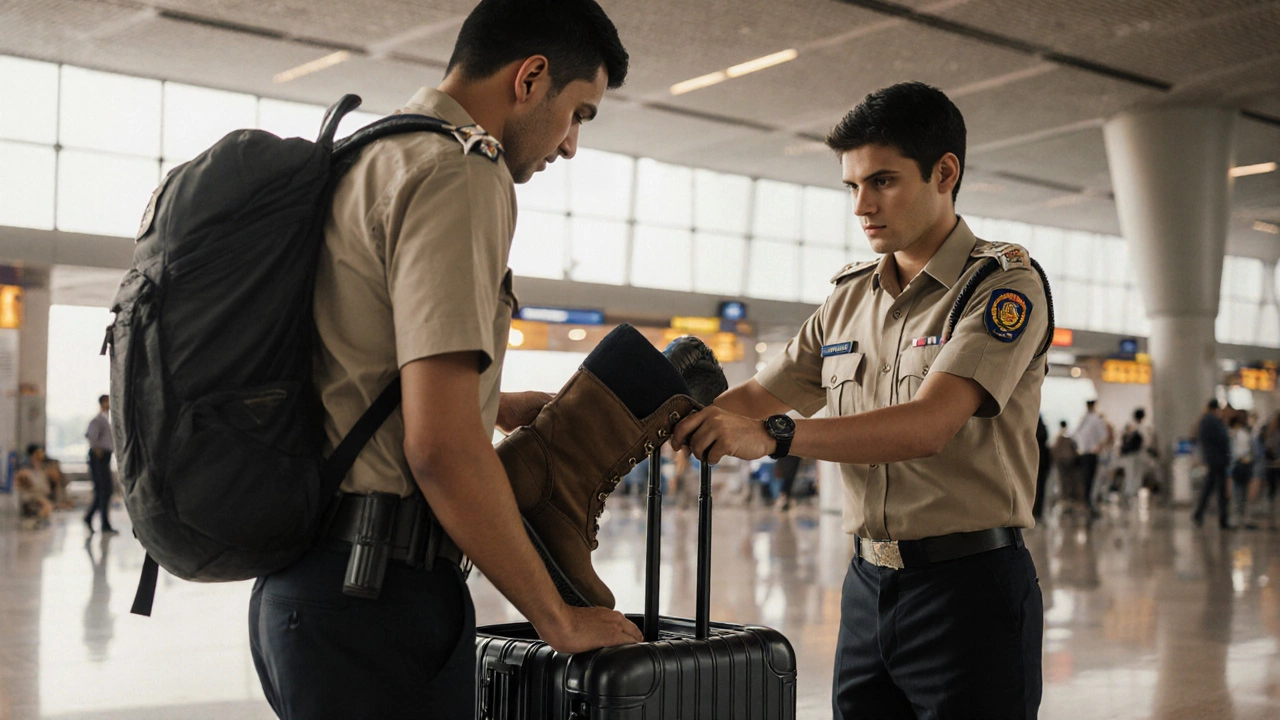India Packing Validator
What NOT to Bring: North India Travel Guide
Check if your packed items comply with North India travel guidelines. The tool will validate against the article's list of forbidden items.
Enter an item to check its validity for North India travel
Did you know a single pair of shoes can land you in a customs headache in Delhi? When you’re heading to North India, the biggest mistake isn’t forgetting a passport-it’s packing the wrong stuff. Below you’ll find every item you should leave at home, why it matters, and what to bring instead, so your journey stays smooth and unforgettable.
Understanding the Landscape of North India
North India is a region that spans the Himalayan foothills, the fertile plains of the Ganges, and the bustling metropolises of Delhi, Jaipur, and Lucknow. Its climate swings wildly from scorching summer heat in the plains to sub‑zero nights in the high mountains. This diversity means a one‑size‑fits‑all packing list simply won’t work.
Clothing Pitfalls You’d Better Skip
- Heavy winter coats for Delhi or Agra. Unless you’re heading to Ladakh or Shimla, a bulky coat will just take up space and make you sweat in the 40‑°C heat.
- Bright white garments for religious sites such as the Golden Temple in Amritsar. White is considered a mourning colour in many Hindu and Sikh traditions.
- Excessive footwear. A pair of sturdy walking shoes and a lightweight sandal are enough. Packing multiple boots or high‑heels invites extra baggage fees.
- Traditional Indian clothing you can easily buy locally. Buying a sari or kurta on the road is part of the adventure and saves luggage room.
Instead, opt for breathable cotton shirts, quick‑dry trousers, and a lightweight fleece for high‑altitude trips. A compact rain jacket will see you through monsoon surprises.
Food, Health, and Hygiene Items to Leave Behind
- Fresh fruit or vegetables. Indian customs prohibit importing fresh produce to protect local agriculture.
- Over‑the‑counter antibiotics or prescription medication not documented in a doctor’s note. You could face confiscation or fines.
- Strong perfume or scented lotions. Many temples and public transport systems have strict no‑fragrance policies.
- Large bottles of shampoo or conditioner. Travel‑size containers are sufficient and meet airline liquid limits.
Bring a small first‑aid kit with basic band‑aids, antiseptic wipes, and any prescribed meds in the original packaging. A reusable water bottle with a built‑in filter is a lifesaver for staying hydrated safely.
Electronics, Gadgets, and Power Concerns
Electric plug type C/D is the standard used across most of India. Packing the wrong adapter means you’ll be hunting for a charger at the airport.
- Multiple high‑power devices (hairdryers, curling irons). Indian voltage is 230V; using a high‑wattage appliance without a converter can damage it.
- Large DSLR lenses if you can get away with a smartphone camera. Light‑weight mirrorless cameras offer similar quality with less bulk.
- Extra power banks unless you need them for long treks. Most hotels provide chargers, and a single 10,000mAh bank is usually enough.
Pack a universal travel adapter, a single surge‑protected power strip, and keep a portable charger handy for train journeys.

Money, Valuables, and Security Essentials
- Huge amounts of cash. Carrying more than ₹10,000 (aboutUSD130) can attract unwanted attention and complicate customs.
- Expensive jewelry or watches. They’re best left at home; you can buy beautiful pieces locally at a fraction of the price.
- Unnecessary credit cards. One international card plus a backup is sufficient.
Instead, bring a mix of small cash, an RFID‑blocking wallet, and a pre‑loaded travel card. A discreet money belt keeps valuables safe without drawing eyes.
Cultural and Religious Sensitivities to Respect
India’s diversity includes a tapestry of customs that influence what you should avoid packing.
- Printed shirts with political slogans or offensive imagery. You’ll be asked to change before entering many public places.
- Leather products made from cow hide. Many vegans and religious communities prefer you avoid them in certain regions.
- High‑heels for temple visits. Sacred sites require you to remove shoes; a comfortable flat is best.
Research the specific state you’re visiting-Himachal Pradesh, for example, values modest dress, while the border towns of Jammu & Kashmir have stricter security checks.
Smart Substitutes and Packing Hacks
- Use compression bags for clothing to halve the volume.
- Download offline maps and language apps instead of bringing bulky guidebooks.
- Carry a foldable tote bag for spontaneous shopping trips; you’ll need it for souvenirs.
- Swap heavy toiletries for solid shampoo bars and soap nuts.
These tricks free up space for a small souvenir or an extra pair of socks-just the way you want it.

Quick Reference: What NOT to Bring
| Item | Reason to avoid | Better alternative |
|---|---|---|
| Heavy winter coat (plains) | Bulky, excessive for hot climate | Light fleece or jacket |
| Fresh fruit/vegetables | Customs restriction | Buy fresh produce locally |
| Multiple shoes | Unnecessary weight | One sturdy pair + sandals |
| Strong perfume | Forbidden in temples & public transport | Unscented deodorant |
| Large shampoo bottles | Exceeds airline liquid limits | Travel‑size or solid bar |
| High‑power hair dryer | Voltage mismatch, bulk | Room‑provided dryer or low‑wattage brush |
| Excess cash | Risk of loss & customs issues | Mix of small cash, travel card |
| Expensive jewelry | Theft risk, unnecessary | Buy local accessories |
Mini‑FAQ
Frequently Asked Questions
Can I bring my own spices to India?
No. Indian customs prohibit importing any food items, including spices, to protect local markets and prevent contamination.
Do I need a voltage converter for my electronics?
India uses 230V, 50Hz. If your device is dual‑voltage (110‑240V) you’re fine. Otherwise, bring a step‑down converter for high‑power appliances.
Is it okay to wear shorts when visiting temples?
Generally not. Most temples require you to cover knees and shoulders. Opt for lightweight trousers or long skirts.
What kind of adapter should I bring?
Pack a universal travel adapter that includes type C and type D plugs; these cover the vast majority of outlets in North India.
Should I carry a separate bag for souvenirs?
A foldable tote or lightweight duffel is ideal. It fits in overhead compartments and expands for extra purchases on the way back.
By sticking to this list, you’ll avoid customs snags, keep your luggage light, and respect the local culture-all essential for a smooth North India adventure. Remember, the goal is to travel light, travel smart, and enjoy every moment without the burden of unnecessary gear.
